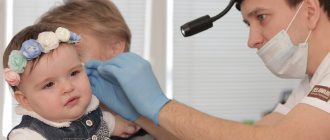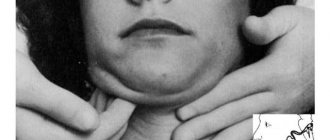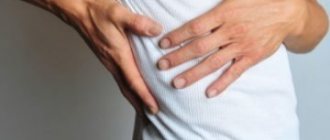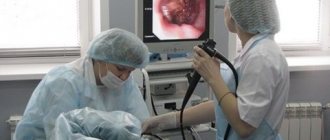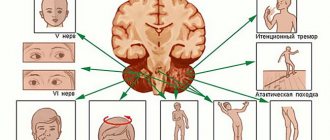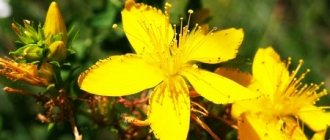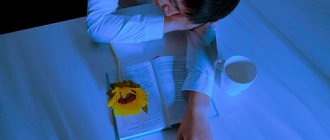Etiology
Inflammatory lesions of the ganglia do not develop spontaneously or for no apparent reason. In the vast majority of cases, the following infections are the triggering factors:
- herpes zoster;
- typhoid fever and dysentery;
- pleurisy and malaria;
- measles and scarlet fever;
- tonsillitis and syphilis;
- influenza and brucellosis.
Also, the causes of ganglionitis can be presented:
- wide range of injuries;
- severe intoxications of the body that are toxic, narcotic, alcoholic or medicinal in nature;
- long-term use of corticosteroids;
- benign or malignant neoplasms, regardless of etiology and location;
- inflammation of the tissues of the reproductive system organs in females;
- the course of osteochondrosis, hepatitis and radiculitis;
- chronic rhinitis or sinusitis, pharyngitis or otitis, as well as tonsillitis;
- metabolic disorders, for example, diabetes.
Extremely rare provocateurs of this disease are:
- weather conditions;
- climatic factors;
- CNS injuries;
- mental disorders.
Alternative medicine
In fact, treating the symptoms of pelvic ganglioneuritis with folk remedies is not the best solution. All doctors unanimously speak about the dangers of such therapy. Indeed, in reality, it is not capable of completely eliminating the pathology, but only temporarily dulling the external manifestations of the disease. At the same time, the original cause of the disease will remain unidentified, which is why it may soon remind itself. Of course, after such therapy the risk of relapse is extremely high. But for those who, for some reason, simply cannot see a doctor, treatment of pelvic ganglioneuritis with folk remedies can really be useful. But it is worth noting once again that such therapy is not able to completely rid a person of the problem.
Fans of traditional medicine consider willow decoction to be a very effective remedy. It is recommended to take one tablespoon 4 times during the day before meals. To make the medicine you need:
- Pour 10 g of crushed tree bark into 200 ml of hot water;
- cook the product over low heat for 20 minutes;
- strain the prepared broth through several layers of gauze;
- After the infusion has cooled, you can drink it.
Another folk remedy that effectively treats the symptoms of pelvic ganglioneuritis is an ointment made from glycerin and iodine. This medicine must be used every day for a month. To prepare you need:
- mix iodine and glycerin in equal proportions, placing the components in a convenient bottle;
- Shake the bottle thoroughly, soak a cotton pad in the resulting solution;
- Gently lubricate the areas where the pain is localized.
Classification
The main division of the disease implies the existence of several variants of the course of ganglionitis, differing in the location of the source of inflammation. Thus, the disease affects:
- pterygopalatine node;
- ciliary node - the second name is Oppenheim syndrome;
- geniculate ganglionitis, also called Ramsay Hunt syndrome (geniculate ganglionitis);
- ear node or Frey's syndrome;
- submandibular node;
- sublingual node;
- trigeminal or Gasserian node (Gasserian ganglionitis);
- upper cervical node;
- star knot.
Based on the etiological factor, they distinguish:
- herpetic ganglionitis;
- intoxication;
- traumatic;
- infectious;
- tumor.
Preventive recommendations
Treatment of this pathology can only prevent relapses due to the chronic course of the disease. So, if you have a predisposition to this disease, and in order to exclude ganglionitis of the pterygopalatine ganglion, you must adhere to the following points:
follow the necessary recommendations of doctors;- avoid stressful situations;
- drink a minimum of alcoholic beverages;
- limit contact with people who suffer from infectious diseases;
- carry out timely prevention of viral and infectious diseases during periods of mass disease (spring, autumn).
It is also necessary to put your sleep and wakefulness in order, as well as avoid overwork and heavy loads, and devote as much time as possible to rest and walks in the fresh air.
It is necessary to visit the dentist in order to avoid caries, pulpitis and other problems with the teeth and oral cavity. Avoid stressful situations. Reconsider your attitude towards the things that worry you most and react to stimuli more calmly; perhaps use antidepressants. In order to choose the right sedatives, you need to consult a doctor.
Symptoms
The presence and severity of symptoms will be dictated by the location of the inflammatory process. However, the following clinical manifestations are considered common to all forms of the disease:
- pronounced paroxysmal pain;
- severe itching of the skin located above the affected node;
- swelling and redness of the skin area;
- increased sensitivity to external stimuli;
- profuse sweating;
- local and general increase in temperature indicators;
- malaise, weakness and weakness;
- muscle atrophy and limited joint mobility.
Ganglionitis of the pterygopalatine ganglion is expressed in:
- spread of pain in the eye sockets, jaws, nasal cavity and temples, auricle and back of the head, forearm and hand;
- swelling of the face;
- increased salivation and lacrimation;
- discharge of mucus from the nostril corresponding to the side of the lesion.
An attack of severe symptoms can last from 10 minutes to several days. Patients also complain of increased intensity of symptoms at night.
Ganglionitis of the ear node is represented by the following symptoms:
- paroxysmal pain spreading to the temples and back of the head, neck and chest, forearm and upper limb;
- noise and ringing in the sore ear;
- profuse salivation.
Inflammatory damage to the ciliary node is characterized by:
- “falling out” of the eyes from their sockets;
- irradiation of pain to the frontal part, root of the nose and temporal region;
- increased sensitivity to bright light;
- swelling of the eyelids;
- exophthalmos.
Symptoms of the Gasserian node form of the disease may include:
- photophobia and keratitis;
- increase in body temperature;
- paresthesia;
- muscle weakness;
- body aches;
- the appearance of vesicle-type rashes;
- swelling of the eyes.
Skin rashes due to ganglionitis
When the stellate ganglion becomes inflamed, the following is observed:
- heart rate disturbance;
- heart pain;
- numbness of the upper limb.
The submandibular and sublingual appearance has the following features:
- localization of pain in the tongue spreading to the lower jaw, back of the head, neck and temples;
- inability to move the jaw;
- discomfort while eating;
- increased saliva secretion;
- coating of the tongue with a white coating;
- swelling of soft tissues.
With cervical ganglionitis, patients complain of:
- pale skin;
- nasal congestion;
- tissue hypertrophy;
- an increase in the number of fine wrinkles;
- redness of the eyeball and part of the face on the affected side;
- aching pain in the neck, back of the head and shoulder girdle.
Clinical manifestations of geniculate ganglion pathology may include:
- general malaise;
- herpetic rashes around the ear;
- attacks of severe dizziness;
- decreased hearing acuity;
- paresis of the facial or trigeminal nerve;
- formation of herpetic papules on the tonsils and soft palate;
- horizontal nystagmus;
- paresis of facial muscles.
It is also worth noting that the muscles located near the affected node begin to atrophy and lose their mobility.
Causes of ganglionitis of the pterygopalatine ganglion
The pterygopalatine node can be affected due to inflammatory processes in the sinuses of the upper or lower jaw (osteomyelitis), the ethmoid labyrinth of the paranasal sinuses. The causes of this disease can also be toxic effects from tonsillitis, local damage (for example, foreign damage to the nose or its mucous membrane), the harmful effects of caries, and purulent otitis.
Any infectious foci in the oral cavity can become serious provocateurs of this disease. Provocateurs for the excitation of the disease are overwork or lack of sleep, loud annoying sounds of a constant nature, stress, alcohol abuse or smoking.
Inflammation of the pterygopalatine node can also be caused by maxillary tumors, both benign and malignant.
Diagnostics
A neurologist can make a diagnosis of ganglionitis due to the pronounced and specific clinical picture of such a disease. This means that the diagnostic process is based on the following manipulations:
- familiarization with the medical history - this will indicate an etiological factor that has a pathological basis;
- collection and study of life history - indicates the influence of the most rare causes of inflammation of the ganglia;
- thorough examination and palpation of the affected area;
- assessment of the condition of the skin and mucous membranes;
- measurement of heart rate and temperature;
- a detailed survey of the patient to determine the severity of clinical manifestations.
Additional diagnostic measures include:
- radiography;
- ultrasonography;
- general and biochemical blood test;
- consultations with a dentist and infectious disease specialist, otolaryngologist and ophthalmologist, dermatologist and cardiologist.
Ultrasonography
Treatment
This disease can be cured using conservative methods of therapy, which are based on taking the following medications:
- analgesics and antispasmodics;
- ganglion blockers and antiviral substances;
- antibiotics and sulfonamides;
- desensitizers and immunomodulators;
- neuroleptics and antidepressants;
- nootropic drugs and vitamins;
- anticholinergics and biogenic stimulants.
Drug treatment also includes the injection of glucocorticosteroids into the projection of the diseased node, as well as the implementation of novocaine blockades.
Physiotherapeutic procedures are no less effective, including:
- diadynamic therapy;
- medicinal electrophoresis;
- fluctuarization;
- darsonvalization;
- UHF;
- nitrogen, hydrogen sulfide, radon and turpentine baths;
- amplipulse therapy;
- vibration vacuum therapy;
- thalassotherapy;
- interference therapy.
Interference therapy
In cases of ineffectiveness of conservative methods, surgical intervention aimed at excision of the diseased node is resorted to.
What drugs are effective
With this disease, doctors usually prescribe to their patients:
- vitamin complexes - “Vitrum osteomag”, “Kalcemin Advance”, “Calcium D3-nycomed”, “Neuromultivit”, “Unigamma”, “Vitaxon”, “Pentovit”, “Neurorubin”;
- antidepressants and sedatives - Fluoxetine, Sertraline, Escitalopram, Paroxetine, Fluvoxamine;
- ganglion blockers - “Gigronium”, “Benzogixonium”, “Imekhin”, “Dimecolin”, “Quateron”, “Pentamin”, “Camphonium”, “Temekhin”, “Pahikarpin”, “Pirilene”;
- antispasmodics - “Piren”, “Ipravent”, “Platifillin”, “No-spasm”, “Buscopan”, “Oxyvent”, “Midriacyl”, “Midrum”, “Detrusitol”;
- neuroleptics - Fluanxol, Levomepromazine, Abilify, Quetiapine, Molindone, Triftazine;
- anticholinergics - “Besalol”, “Atrovent”, “Atropine sulfate”, “Bellalgin”, “Atropine”, “Bellasthesin”, “Becarbon”;
- antihistamines - Rupatadine, Azelastine, Cetirizine, Astemizole, Akrivastine, Bilastine, Loratadine, Levocabastine;
- analgesics - “Ibuklin”, “Tempalgin”, “Ibuprofen”, “Ketanov”, “Naproxen”, “Pentalgin”, “Baralgin”, “Caffetin”, “Ketorol”;
- antiviral and antibacterial agents - “Imupret”, “Influcid”, “Lavomax”, “Neovir”, “Derinat”, “Poludan”, “Remantadin”, “Engistol”;
- immunomodulators - “Likopid”, “Intron A”, “Reaferon”, “Amiksin”, “Savrats”, “Immunofan”;
- calcium chloride and calcium gluconate.
In addition, modern medicine offers special virostatics for the treatment of the herpetic form of pelvic ganglioneuritis - Famciclovir and Brivudine. Today these drugs are considered very popular.
In acute forms of the disease, patients are additionally prescribed corticosteroids.
